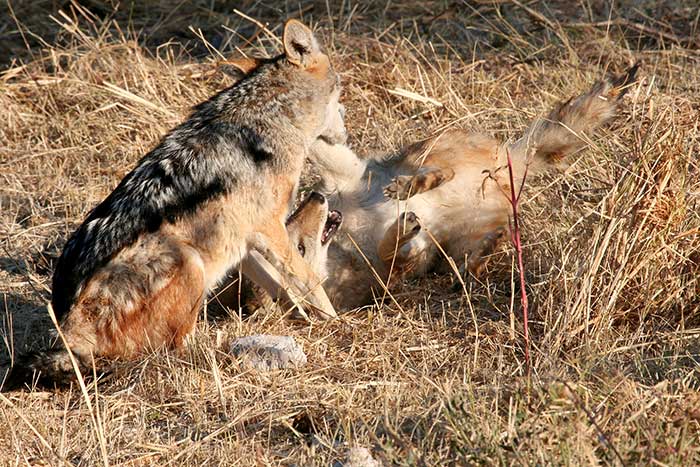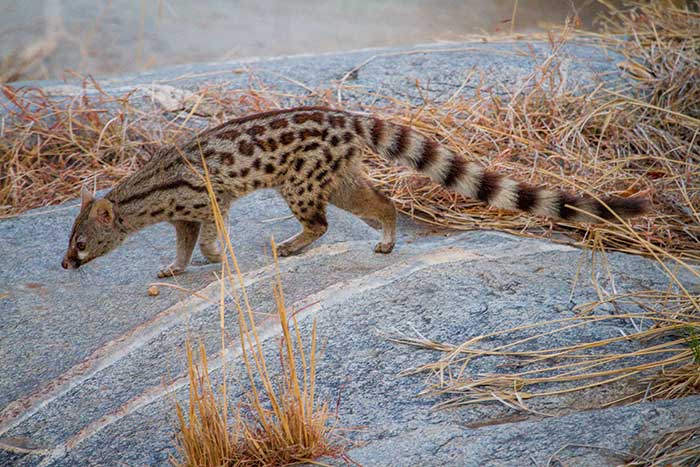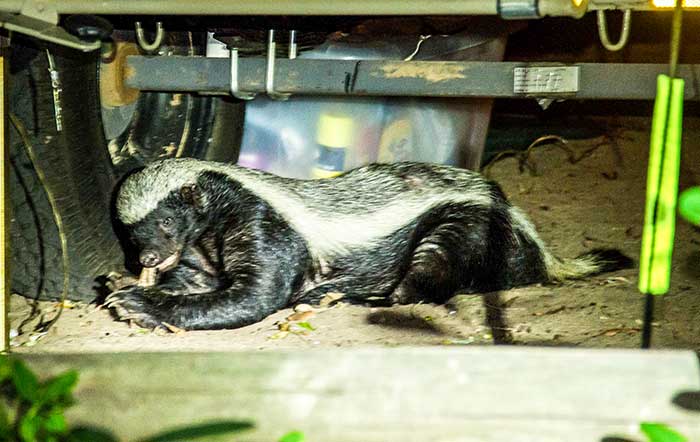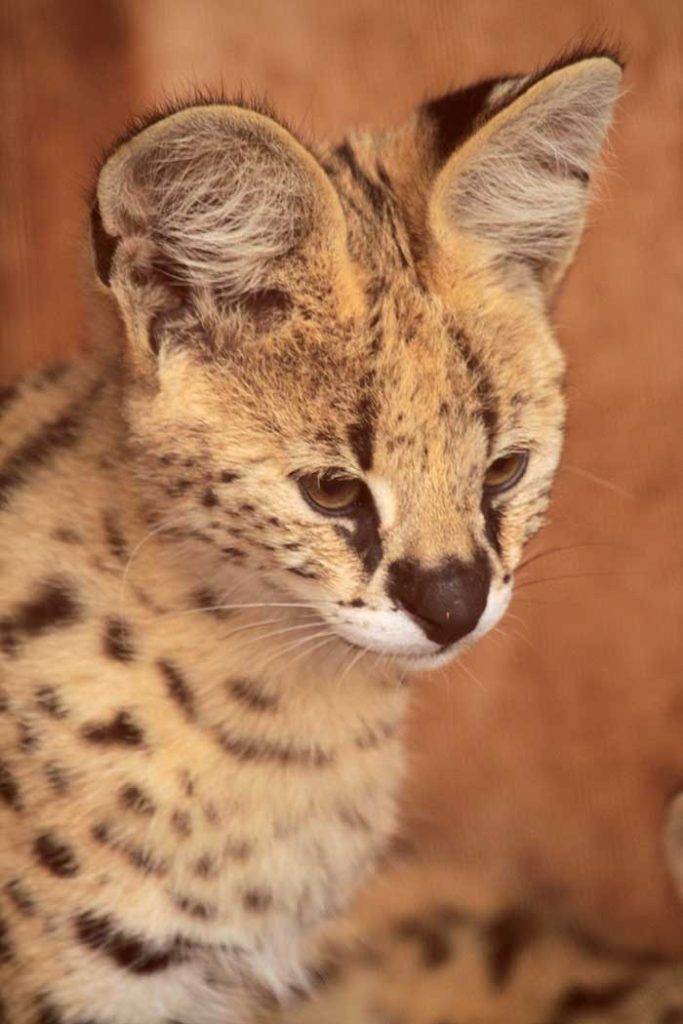Small African Animals
Some of the smaller African animals i.e Honeybadger, Caracul, Civet, and Genet not generally seen


Honey Badger / Ratel
The honey badger has short legs and stout claws and is a strong burrower and a good climber.
About 61 cm long excluding the tail, it has a coat that is black on the lower half of the body and pale gray above.
The name ‘honey badger’ is derived from its supposed habit of following the Honeyguide bird to a bees nest, the honey badger rips it open. The bird and the honey badger then share the honey.
They are often in pairs and sometimes alone, living partly in trees and found in most habitat types. It preys on rodents and insects, but also eats fruits and roots.
The ratel has very thick, loose skin that is difficult to grasp. The skin around the throat is so thick that it is said to defy the bite of a dog or a leopard


Genet
Small cat with short legs, pointed snout and ringed tail. The muzzle is pointed and the ears are rounded. No two animals are exactly alike. Two to four young are born during the summer months, usually in the mother’s daytime shelter. Genets are often seen at night in the wilds. The small-spotted genet has habits similar to the large-spotted genet: it is nocturnal, scales trees, uses tree-holes, undergrowth or disused burrows as shelter in the day, and eats insects, mice and rats, geckos, frogs, snakes and scorpions. It stalks its prey like a cat.
In defence it will arch its back and the hair down the spine will bristle, while also emitting an unpleasant odour from a secretion in its anal glands. Genets return to the same place day after day, hunting mostly on the ground. They spit and growl like cats when they are angry or threatened. Their normal call is a clear metallic note
Genets were kept as pets by the ancient Egyptians, the genet was kept as a rat catcher The domestic cat eventually replaced the genet, probably because it is more efficient at killing rats-and perhaps because it is less smelly

Civet
A long legged half-dog half-cat like creature with long course body hair and a vivid pattern of black spots.
Fairly common in all the wilderness areas, often seen on night drives in the national parks. During the day, they hide in thickets or holes and by night are omnivorous feeders.
They return to the same place to defecate where they deposit large piles of dung, showing the remains of beetles, fruit and a wide range of other food. They are in fact very important disperses of fruit seeds.

Their scent glands secrete a nauseating smell used to mark their territory. They gestate for 6-9 weeks and live up to 14 years.
Jackal
The jackal, a medium-sized carnivore with doglike features and a bushy tail, is widely distributed in Africa, the Middle East and India. The ancient Egyptians believed a jackal-headed god, Anubis, guided the dead to those who judged their souls. Such beliefs were probably encouraged by the jackal’s cleverness, nocturnal habits, eerie howling and scavenging.
Habitat
The common jackal lives in open savannahs, deserts and arid grasslands. Side-striped jackals are found in moist savannas, marshes, bushlands and mountains. The sliver-backed jackal lives primarily in savannas & woodlands.
Family
Jackals live singly or in pairs, and are sometimes found in small packs. They are among the few mammalian species in which the male and female mate for life. Mated pairs are territorial, and both the female and male mark and defend the boundaries of their territory
Hunting
Jackals are opportunistic omnivores. They cooperatively hunt small or young antelopes such as dik diks or Thomson’s gazelles or even domestic sheep.
They also eat snakes and other reptiles, insects, ground-dwelling birds, fruits, berries and grass. A pair of jackals will move through their territory at a fast trot, stopping frequently to examine something, sniff the air or listen-ready for any opportunity that might provide a meal.
Jackals are noisy. Family or pack members communicate with each other by a screaming yell and yapping, or a sirenlike howl when a kill is located.
Jackals are very cunning and resourceful. Although usually considered scavengers-they do pick over kills made by large carnivores and frequent rubbish dumps-they also hunt and kill a variety of prey
